Switzerland might not be the country that immediately springs to mind when you think of sailing. Although there has been considerable media coverage of the Alinghi team, Switzerland is not exactly renowned for its nautical heritage.
Despite this, it is a country with many lakes and some of them get some reasonably consistent wind. There are however some very “special” regulations with respect to sailing in Switzerland. I will attempt to outline some of them in this article.
Certification
Switzerland has it’s own certification system for sailing and motor boats. You will require a Swiss Licence to navigate any boat with more than 15 square metres (12 square metres on Lake Constance) of sail area or with more then an 8HP (6KW) engine on Swiss waters.
The A License (A Schein) is for motor boats of more than 8HP (6HP on the Lake of Constance).
The D License (D Schein) is for sail boats of more than 15 square metre sail area.
If a sailing boat with more than 15 square metres of sail also has more than an 8HP engine on board you will effectively require both licenses to sail that boat!
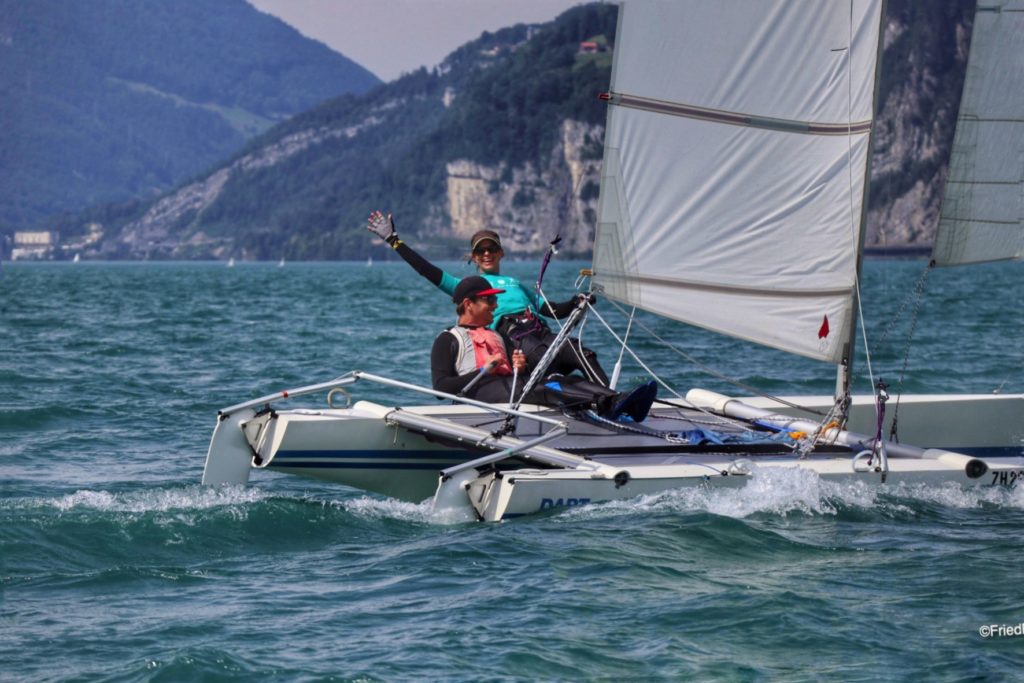
Acceptance of Foreign Certification
Unless you are from a neighbouring country (Italy or South Germany) and live in Switzerland, you will not be able to use your already obtained certification here. If you are non-resident in Switzerland you may be able to use an ICC from another country to sail or drive a boat, but as soon as you are resident your foreign certification is not valid and with very few exceptions, there is no possibility to get your existing certification recognised. Regardless of your sailing experience or certification if you come to Switzerland you are limited to less than 15 square metre sail area or 8 HP engines.
Getting Swiss Certification
To get a Swiss Sailing or Motor Boating license the process is similar to applying for a drivers licence. You will first get an application form from the local Department of Motor Vehicles (Strassenverkehrsamt), these forms can be downloaded online from the website of your local Strassenverkehrsamt. You will then need to do an eye test similar to the driving licence eye test and get your passport photos confirmed by a local authority, lawyer or doctor. Then you can submit the form and get an invitation for a theory test.
Theory Test
The Theory test is a multiple choice test with 60 questions (out of a possible 510 pool questions) and negative marking.
- A non-completed question will give you -1 point
- Not ticking the correct answer will give you -1 point
- Each wrong answer you give to a question will give you -1 point (each)
This means it is possible to get -3 points for one wrong question if you don’t tick the correct answer and give two wrong answers. You will fail the test if you get more than 15 minus points. The theory test is the same for both sail and motor.
To practice for the Theory test I can highly recommend the Bootspruefung24 App, this has 15 practice tests and if you can answer all the questions in these 15 tests you will have no surprises in the official Theory Test.
Once you have passed the Theory test you are then eligible to do the practical test. In most cases an instructor will register you for the test, but I believe if you really want to you can register yourself. My advice is no matter how experienced you are take a couple of lessons first as some aspects of the test are quite specific to Switzerland!
Practical Test
The practical test is usually taken on a body of water in your canton of residence as the licence will be issued by your local Department of Motor Vehicles.
The procedure is quite straightforward. Your examiner will meet you a couple of minutes before the test start to get the introductions and formalities out of the way. He will then ask you some questions about the weather situation on the day to see if you can assess whether it is safe to go on the water or not.
You are then expected to prepare the boat to go on the the water and in doing so show evidence that you know all safety equipment which needs to be onboard by Swiss law and where it is on this particular boat. Once this has satisfactorily completed you will head out on the water to perform some maneuvers, such as coming alongside, man overboard, picking up a mooring, sailing a compass course etc. During the maneuvers you may be asked any questions from the theory test orally.
On completion of the “open lake” part of the assessment you will return to your starting harbour where you may be asked to perform some “close quarters” maneuvering, followed by making the boat fast and showing if you can tie some basic knots. (Bowline, Round turn & two half hitches, clove hitch, rolling hitch etc.)
For those with experience the exercises may seem incredibly basic, but they need to be done in such a specific way that the risk of failure for experienced mariners is actually quite real.
Once you pass the test you will get a paper licence which you are required to have with you when sailing or driving any boat (which requires that licence) and on some lakes the Police do spot checks.
Boats Not Requiring a Licence
Even if your boat does not require a licence to operate, it will still need to be registered and undergo a safety inspection. While this procedure varies from canton to canton (as everything in Switzerland), in general you will need to prove that you have a place to store the boat and you will need a contract to prove this. The contract for the boat storage has to be made out to the same name and address as the person who is registering the boat and the address needs to be the primary residence address where that person is registered.
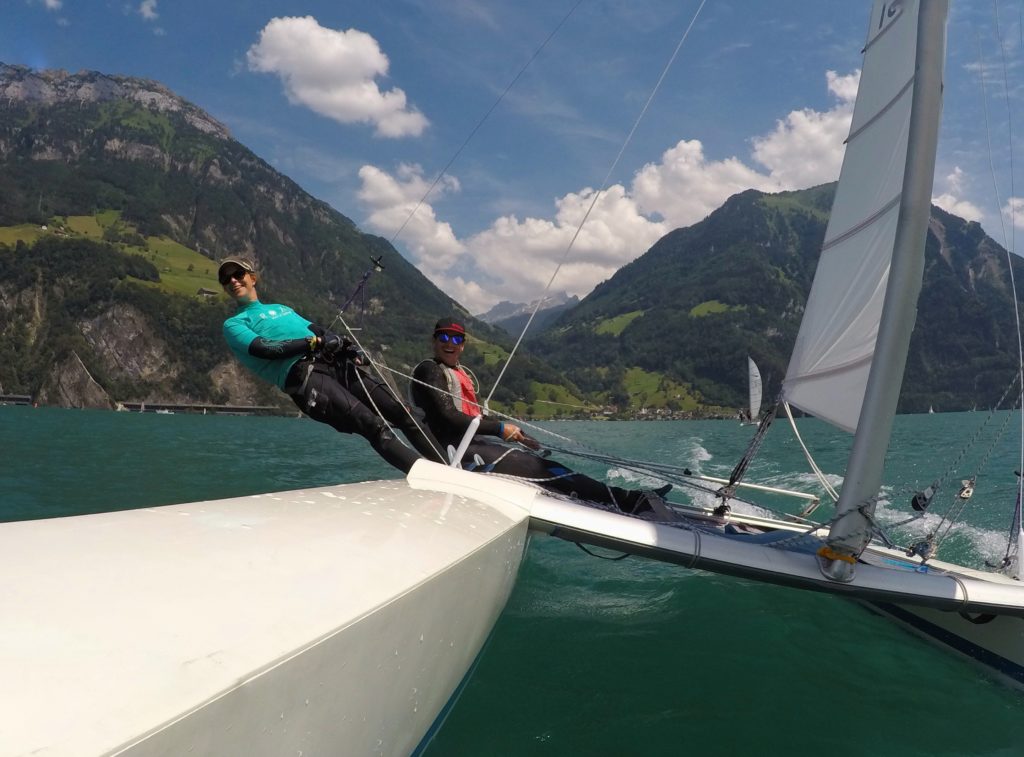
Finding a place in a dinghy park (or a marina) for a boat is not that easy. In Swiss Dinghy Parks there are a lot of old boats in poor repair no longer used, but people are unwilling to give up their place as they will then lose it if they do ever decide to sail again.
Once the boat is registered you will get a number similar to a licence plate for your car, you are required to fix this to the hull on both sides so that it is clearly visible at all times when on the water. It is your responsibility to get stick on letters and numbers yourself to put this on the boat (there is also sizing requirements, depending on both size and type). Transfers of the letters can easily be got at hardware stores like Migros Do it Decor or Coop Bau and Hobby.
Shortly after registration you will be invited for an inspection. This inspection is theoretically to prove the Sea(Lake!)worthiness of the boat. There are requirements which you will need to satisfy like having life jackets with collars, a horn, a red flag and a bailer (even in boats where it might not be practical to use one!). You can download A full list of the equipment needed here.
The examiner will check all this equipment is present and also inspect the boat for structural integrity (ironically in our case he did not look at the sails or rudder at all!) If he is satisfied with all this he will sign you off and return your boat registration document. The boat registration certificate is made of paper and theoretically you must be have it on the boat at all times when it is on the water! While this is ok on a larger keel boat, it is certainly not practical for smaller “wet” sailing boats.
Insurance
Sailing boats with over 15 metre squared sail area and all motor boats require insurance. For sail boats under 15m sail area insurance is optional. (but in my opinion recommended)
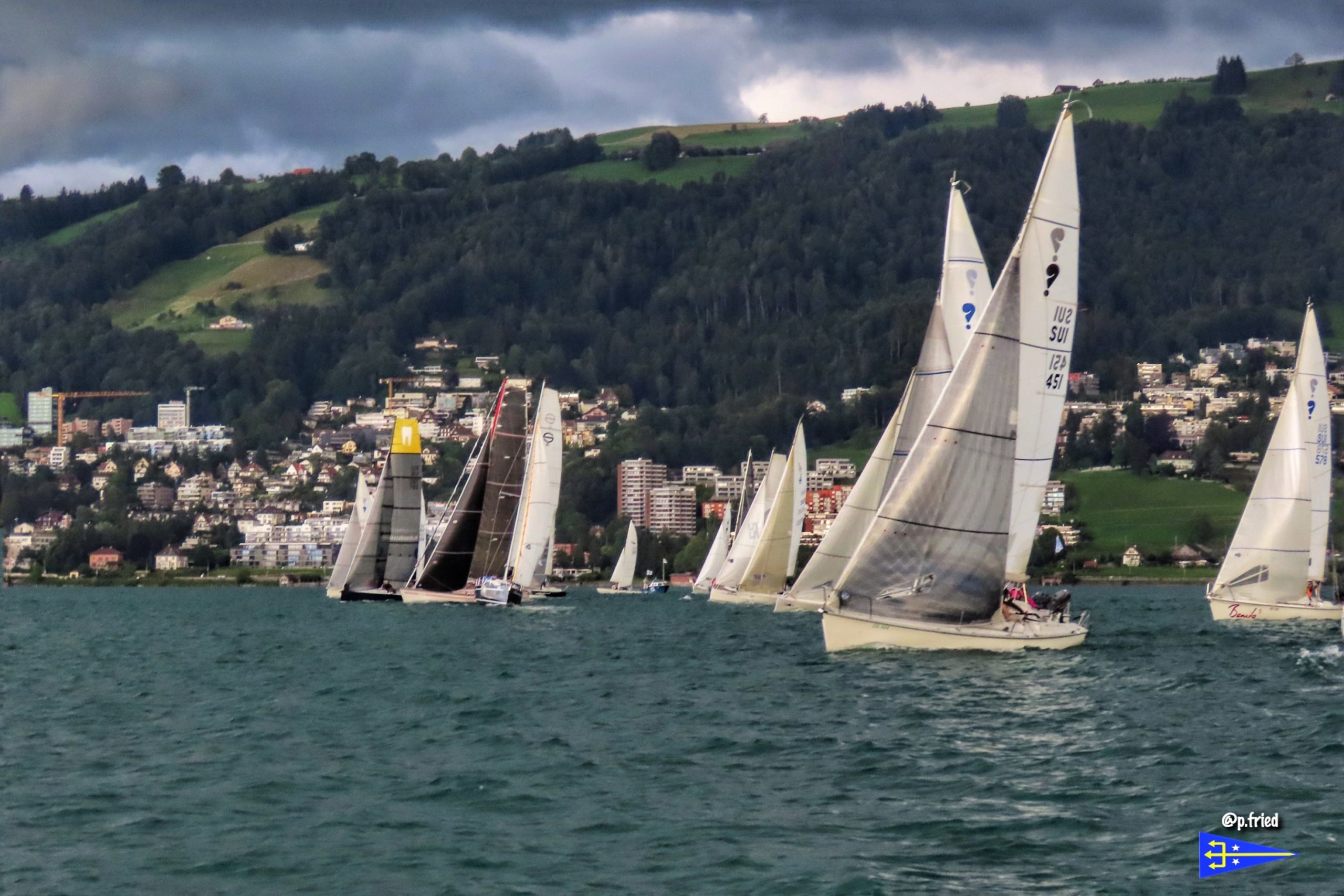
Boat Rental
Very few locations rent small sailing boats (which don’t require certification) and those that I have seen have been not in the best condition. There are a few organisations offering rental of Keel Boats on many Swiss Lakes. These organisations usually require some form of membership and a local certification (D-Schein) to be allowed to sail them, but then I believe the prices are (for Switzerland) quite reasonable. For more information look at Sailbox or Sailcom.
Storm Warning
Swiss Lakes are fitted out with warning systems which light up when the winds are expected to get over 25 knots. With expected winds of more than 25 knots you will see orange lights flashing at approximately 40 flashes per second (high wind warning). Once the forecasted wind speeds exceed 33 knots the lights will flash at 90 flashes per second (storm warning). It is technically illegal to go on the water with a Storm Warning (90 flashes per second) but windsurfing and kite surfing do seem to be tolerated. I’ve often seen Swiss boats starting to struggle once the wind increases to about 20 knots, so if you are experienced and enjoy sailing in stronger winds, don’t expect that everyone around you has it in control.
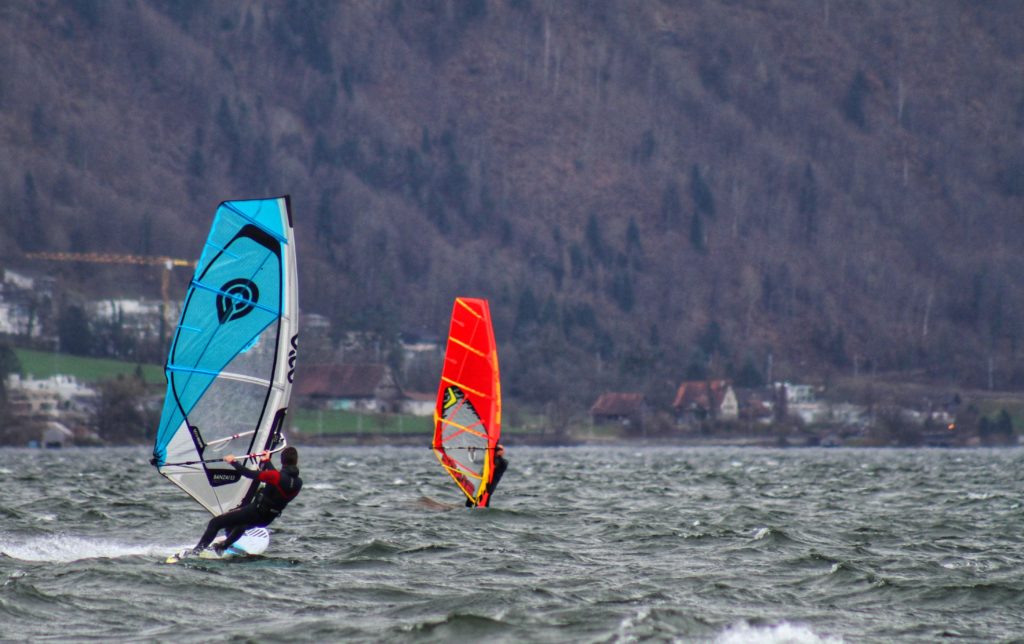
Other Lakes
If you think once you register your boat that you can enjoy going sailing anywhere in Switzerland, then think again. In general you can only use your boat in the canton of registration. If you would like to sail on another lake in a different canton you will first need to check if this is permitted. In many cases one cannot launch any boats not registered on that lake. In some cases, you will need a day pass to launch, in some places any boat registered in Switzerland can launch and in others sailing might be completely prohibited. If participating in a Regatta the organisers will have arranged that all participants may sail on that lake for the duration of the event.
Best Lakes for Wind
Some Swiss lakes have very poor wind statistics and in general sailing on lake Zurich is quite the oxymoron as it very rarely gets decent wind. However, Lakes like Urnersee, Walensee, Neuenburgersee and Lake Geneva often get quite good wind in Summer. In general different lakes benefit from different winds so I’ll try to explain these winds below.
Föhn: The Föhn is a wind that is generated by a pressure gradient between two sides of a mountain range. In Switzerland bad weather on one side of the Alps and good weather on the other leads to a typical Föhn situation. Usually lakes in a north/south direction in a Föhn affected area benefit from this wind, but beware it can be incredibly strong sometimes getting up to gusts of 40 knots. You find South Föhn usually the Northern side of the Alps. It is a strong and warm but gusty southerly wind which is found on lakes such as Urnersee, Walensee, Aegerisee and occasionally Zugersee. Föhn winds on the Urnersee and Walensee often reach 40+ knots. North Föhn in Ticino and the Northern Italian Lakes (Como and Garda) presents as a strong northerly wind
Bise: Bise is a cold North Easterly wind that is often prevalent in Autumn. It can get quite strong and is usually most potent on the lakes in the “Three Lake Land” (Bielersee, Neuenburgersee, Murtensee) and on Lake Geneva. Some other lakes may get some Bise to a smaller extent like the Zugersee.
South West: This is a low pressure wind which develops as storm fronts race across Europe. Usually this wind has lost a lot of it’s strength by the time it reaches Switzerland and is accompanied by frontal weather systems.
Thermal: In summer a few Swiss Lakes can get a good Thermal wind blowing. On days when it cools down quite a lot at night and there is a lot of sunshine giving radiative heat to the mountains during the day you can expect in the region of 15 to 20 knots on a few Swiss Lakes such as the Urnersee or Silvaplana (Windsurfing and Kitesurfing only!)
Summary
While Switzerland is not known as the sailing capital of Europe it is possible to get your sailing fix here. It is however connected with a considerable level of bureaucracy, which those of us who come from many “open sea” countries may find frustrating. Sailing Small boats does not require certification, but it is difficult to find anywhere to rent these boats and there is considerable bureaucracy to put your own boat on the water here. You can rent Keel boats on many lakes but then local certification is required.
Feel free to contact us if you would like any further information regarding sailing in Switzerland.
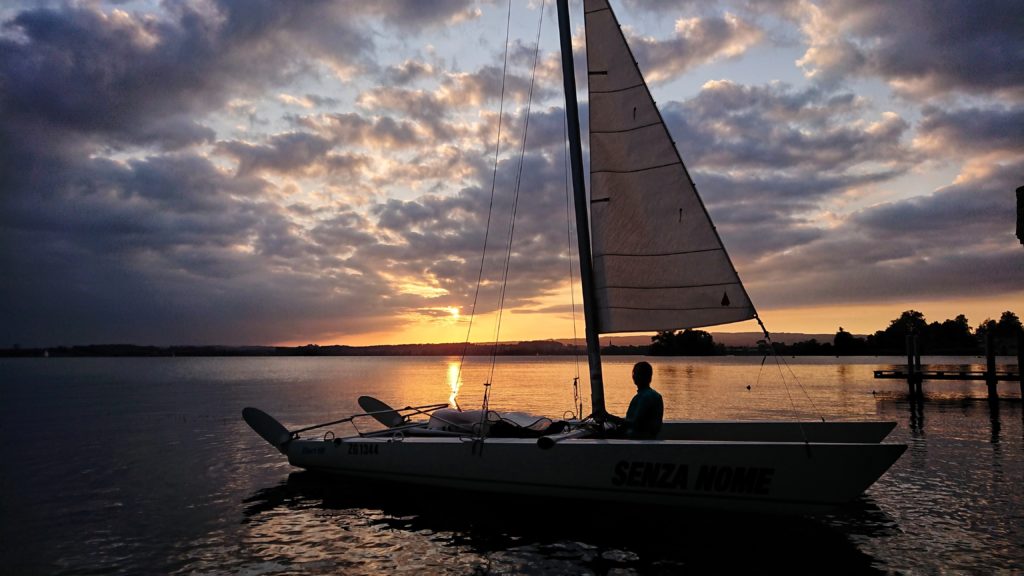
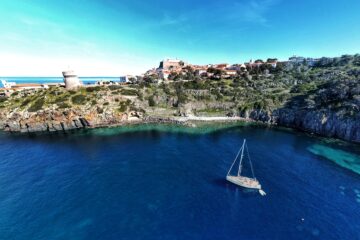
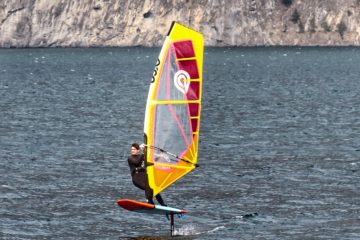
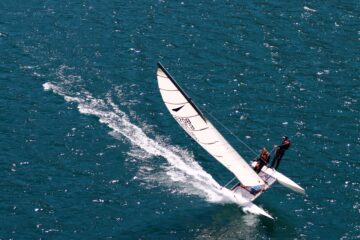
0 Comments